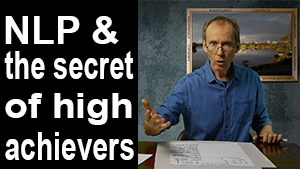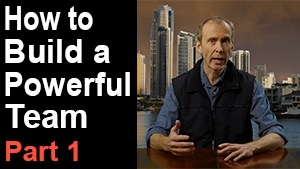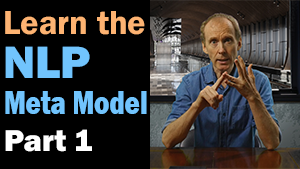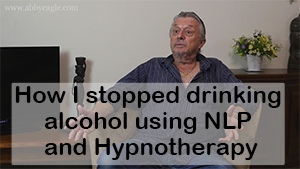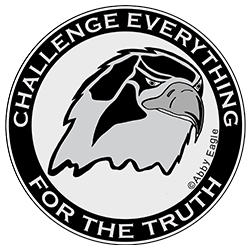
NLP perceptual positions and meditation. How to gain a different perspective that may help bring peace and harmony to a situation. Phone 07 5562 5718 or send an email to book a free 20 minute telephone or Skype session with Abby Eagle. NLP Coaching, Hypnotherapy and Meditation. Gold Coast, Robina, Australia. Online sessions on Skype also available.
How Does Perspective Influence How You Act In The World?
Use NLP perceptual positions to build empathy and understanding

How the ability to shift perceptual positions can help you to become a key person of influence.
(By Abby Eagle) Have you ever wondered how two people could have such different views on a topic of conversation? As an example let's use the asylum seeker, boat people, refugee problem that Australia faces. Some people think of the consequences that hundreds of thousands of immigrants would have and want to block the immigration and protect Australia's interests. These people may be seen as cold and heartless. The other type of person thinks of how it must feel for people to have to flee from poverty, violence and oppression, and wants to take care of them.
So what is the difference between these two types?
The first type takes an objective position and looks at the situation as a dispassionate observer. The second type imagines what it must feel like to be an asylum seeker. The key distinctions are that the first type is looking at the situation. The second type is imagining what it must feel like to be in the shoes of a refugee. The distinction is a difference not just in representational systems but in perceptual positions.
Click the Image to Watch on YouTube
What are NLP perceptual positions?
NLP gives us three perceptual positions, I have added a fourth. They are first (self), second (other), third (observer), and the fourth is 'witnessing'.
The first perceptual position (self) is where you are grounded in your own body, looking out of your own eyes, listening with your own ears, sensing with your own sense of smell and taste. In first position you are fully associated into your own body and its senses.
The second perceptual position (other) is what we call ‘standing in someone else’s shoes’. It is the position of empathy. In second position you get the sense that you can look out of the other person’s eyes, listen with their ears and feel their feelings. From second position you can look out of the others eyes back at yourself or towards others. Some powerful personal growth techniques utilise a second position shift but over responding to others can become a liability in that we may take care of others at the expense of our own needs and wants.
The third position (observer) is holding a perspective that is located outside of your own body such that you can look objectively at others and back across to yourself. For example, at times you might hear a business person say to their colleagues during a heated discussion, "Let's put the topic of conversation out on the table; let's put our thoughts and ideas out on the table and step back for a moment and take a good look at it." In third position there is a sense of detachment but if we personally have an emotional charge on a topic, then we may think of someone who is in third position as being cold and heartless.
The fourth position (witnessing). Meditators sometimes make the error in thinking that witnessing is the same as the third perceptual position. In fact, it is not uncommon for people to use the term ‘observer’ interchangeably with ‘witnessing’ but it has a limitation in that it tends to be associated with third position. Witnessing is independent of the first, second or third position. Witnessing is an awareness of whatever is. Witnessing is consciousness and is there whether you are asleep or awake. Witnessing, awareness is a matter of degree.
When you are asleep it is your witnessing consciousness that is actually aware of the dream experience. When you are awake, even when you are lost in your thoughts, the witnessing consciousness is the one that is aware of the experience. When you are brought more into the present moment through an intense physical experience or through meditation then you become more consciously aware of the experience. You move from unconscious (accidental) witnessing to conscious witnessing. The Witness is a pure witnessing consciousness. You can not step back from it. You are the Awareness.
How to use NLP perceptual positions to facilitate positive change?
Start by bringing awareness to your thoughts and your daily activities. Awareness is number one. Without awareness change can not occur.
Second step is to get involved in an intense physical activity in which you get grounded in your body. This forms a benchmark for first perceptual position.
Once you have a clear first position you can then practise 'stepping into the shoes' of another person. Imagining what it might look like, sound like and feel like to be in their position; what they might be thinking and feeling; getting a sense of why they might talk and act the way that they do.
To practise third position, imagine that you can 'float out of your body' so to speak, and look at both yourself and the other, like a neutral observer. It is like taking your opinion and putting it out on the table next to someone else's opinion; then getting the sense that you can step back and take an objective look at what you both have to offer.
Awareness is the key. Awareness is developed through the practice of witnessing. It is easy. Every time that you notice the movement of clouds in the sky, just notice the movement, don't think about the clouds, just notice the movement. Every time that you notice the movement of wind in a tree, or a breeze gently blowing a curtain, or the movement of your breath just notice the movement. You will find that as you do so that thoughts, that is internal dialogue, will slow down giving you time to think about a topic of conversation with greater clarity and understanding.
Your contribution to this article is welcomed so please take a moment to leave your comments below. And if you are interested in NLP Coaching then please contact me using the contact form on this page.
Share With Friends
| DISCUSSION GROUPS | |
|---|---|
 |
|
| NLP Future Selfing | |
| NLP, Hypnotherapy & Meditation | |
| NLP Peace Mapping | |
| Facebook Discussion Group | |




